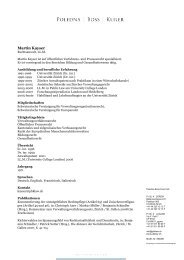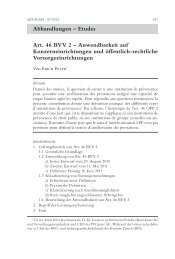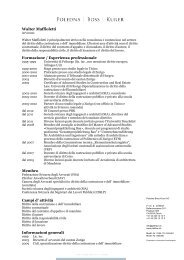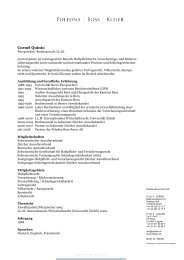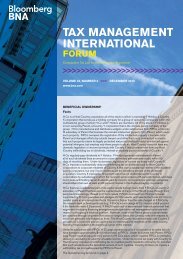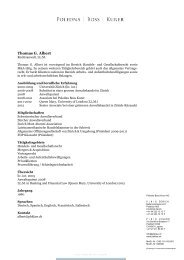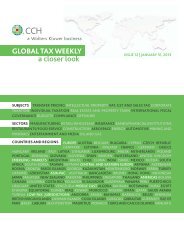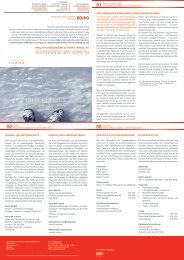721.8 kB - Poledna | Boss | Kurer
721.8 kB - Poledna | Boss | Kurer
721.8 kB - Poledna | Boss | Kurer
- No tags were found...
You also want an ePaper? Increase the reach of your titles
YUMPU automatically turns print PDFs into web optimized ePapers that Google loves.
Tizhong cautioned that while identifying andquantifying potential cost savings ( e.g., lower labor,capital, technology) generated by LSAs is relativelystraightforward, it is more difficult to quantifythe "market premium" ( i.e ., qualities such asmarket size and government incentives that couldmake a particular location more profitable) thatcertain LSAs may generate. Tizhong recommendedeconomic modeling as a first step, with econometricanalysis and game theory as other potentialavenues to explore when attempting to determinea market premium generated by LSAs.In addition to the challenges and importance ofrecognizing and measuring LSAs, Tizhong also addressedseveral other transfer pricing matters thatare at the forefront of the SAT's focus:Lack of Comparables – As with most developingcountries, China has a limited number of publiccompanies. This is due to a manufacturing-basedeconomy, a decreasing number of third-partyarm's length transactions, the level of integrationof a Chinese operation into the multinationalparent company, and other factors. The SAT addressesthe lack of comparables by making transferpricing adjustments to foreign comparables thattake into account differences in geographic factorswhen using the transactional net margin method.Alternatively, the use of the CUP and profit-splitmethods can alleviate this issue; unfortunately,these methods are not always available.Transfer Pricing Examinations – In China, transferpricing cases are subjected to three levels ofpanel reviews: (i) city (prefecture) level, (ii) provinciallevel, and (iii) the SAT. The city reviewaddresses whether the case should be selectedfor additional review or closed. The provinciallevel then conducts the second level of review,and the SAT conducts the final review and hasthe ability to overturn decisions made by lowerlevelexpert panels (however, this is rare). Thethree-level review is designed to promote fairnessto both the taxpayer and the tax authority,something that is not always possible to achievethrough the courts as they rely upon the SATfor guidance in transfer pricing matters.Transfer Pricing Audit Targets – China currentlyfocuses on MNEs that fit any of the followingfact patterns: (i) frequent related party transactions,(ii) abnormal losses or gains, (iii) regularlosses that are not corrected by the business, (iv)failure to report sufficient documentation, or (v)adoption of "unreasonable" pricing policies.It is evident from Mr. Tizhong's comments thatthe SAT will continue to focus on transfer pricingmatters and is busily filling in the gaps interms of its approach to common issues such ascomparables, adjustments, and audit practices.MNEs located or operating in China should bevigilant in setting up and documenting their operationsin a way that minimizes exposure. Inaddition, whether operating in China or otherdeveloping countries, MNEs should evaluatethe existence of potential LSAs that could impactintercompany pricing.30





